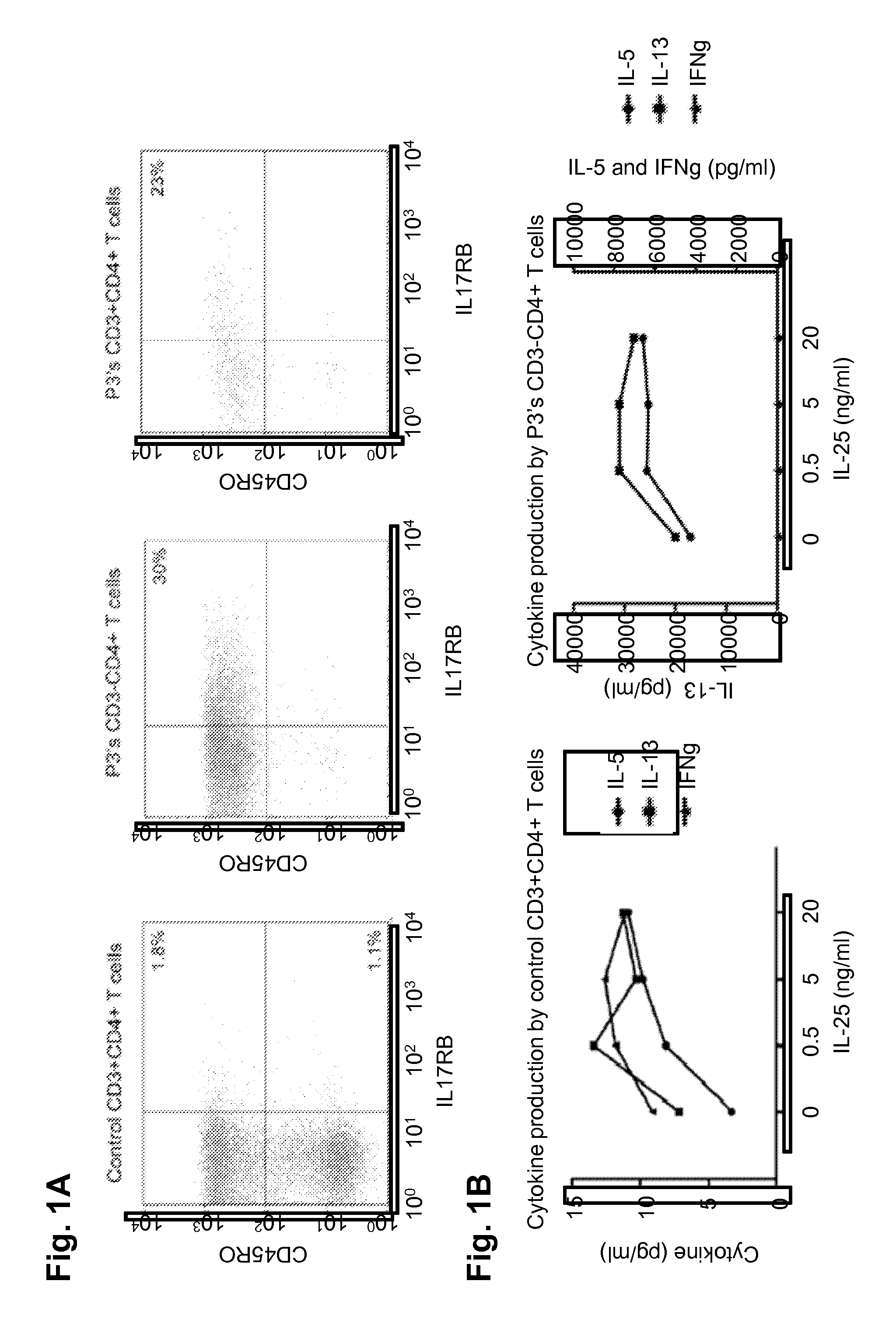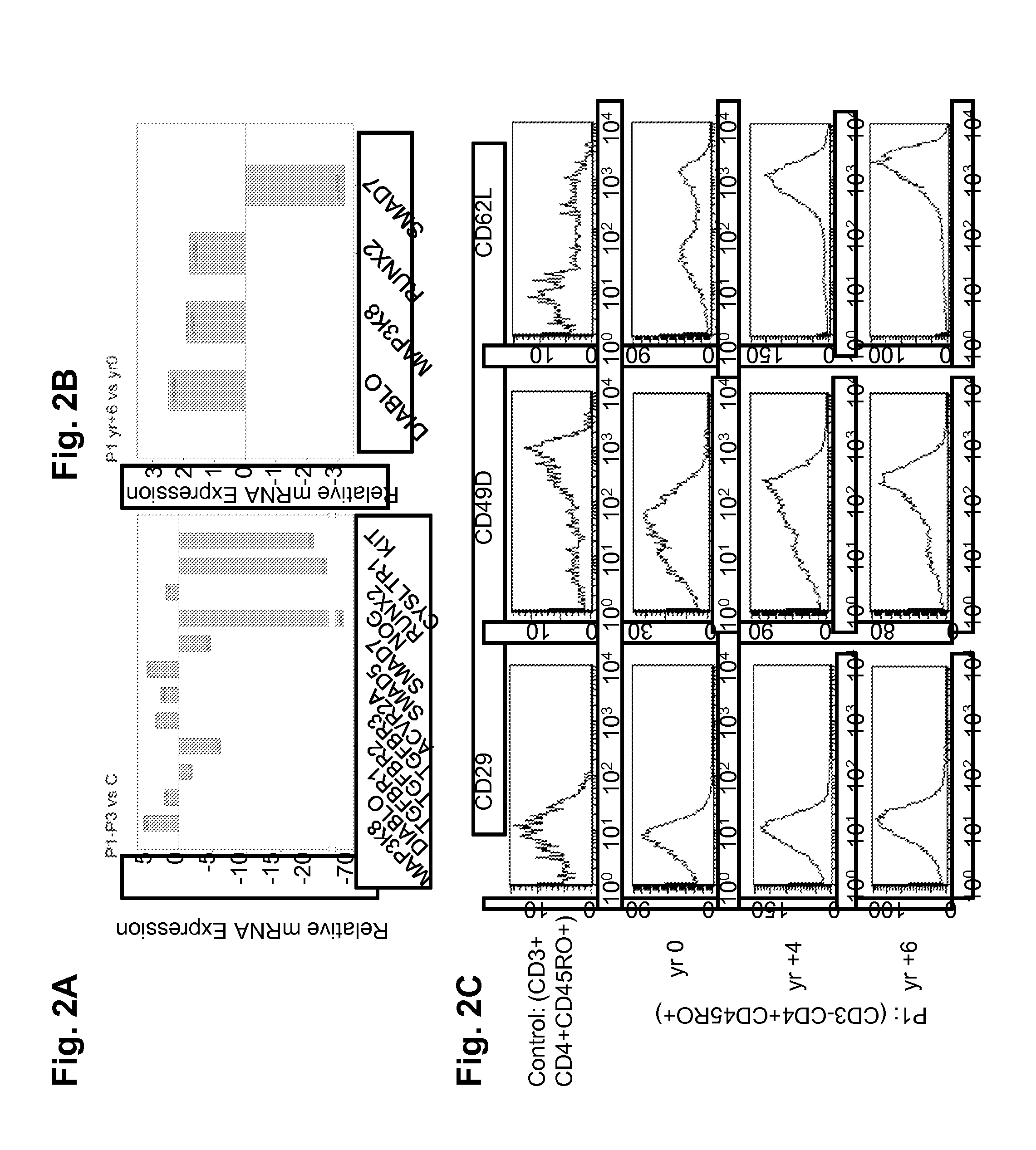Diagnostic method and kit for the detection of a lymphocytic variant of hypereosinophilic syndrome
a lymphocytic variant and hypereosinophilic syndrome technology, applied in the field of diagnosis of a new disease, can solve the problems of refractory treatment of subgroups of patients and difficulty in diagnosis
- Summary
- Abstract
- Description
- Claims
- Application Information
AI Technical Summary
Benefits of technology
Problems solved by technology
Method used
Image
Examples
Embodiment Construction
[0049]Patients:
[0050]Patients with hypereosinophilic syndrome (hES) were selected for cohort inclusion based on the presence of a monoclonal CD3−CD4+ T-cell population in their peripheral blood. The clinical characteristics of all patients analyzed are summarized in Table 1. Informed consent was obtained from all patients and this study was approved by the local ethics committee.
[0051]One patient (P1) developed T-lymphoma after a 6-year follow-up, which was formally demonstrated by histopathological analysis of enlarged cervical lymph nodes; the infiltrating T-cells were shown to be CD3−CD4+. For this patient, blood was drawn at 3 time-points; yr0 and yr+4 (were during the chronic disease phase) while yr+6 was drawn at the time of lymphoma diagnosis.
TABLE 1Clinical characteristics of L-HES patientsLymphocytesAge atFollow-upTotal WBCEosinophils(# / μl)PatientSexDiagnosisevaluationsamplesClinical Stage(# / μl)(# / μl)(% CD3ηCD4+)RefsP1FL-HES16year 0chronic disease16.9008.9204630 (75%)1-3yea...
PUM
| Property | Measurement | Unit |
|---|---|---|
| Volume | aaaaa | aaaaa |
| Volume | aaaaa | aaaaa |
| Volume | aaaaa | aaaaa |
Abstract
Description
Claims
Application Information
 Login to View More
Login to View More - R&D
- Intellectual Property
- Life Sciences
- Materials
- Tech Scout
- Unparalleled Data Quality
- Higher Quality Content
- 60% Fewer Hallucinations
Browse by: Latest US Patents, China's latest patents, Technical Efficacy Thesaurus, Application Domain, Technology Topic, Popular Technical Reports.
© 2025 PatSnap. All rights reserved.Legal|Privacy policy|Modern Slavery Act Transparency Statement|Sitemap|About US| Contact US: help@patsnap.com



